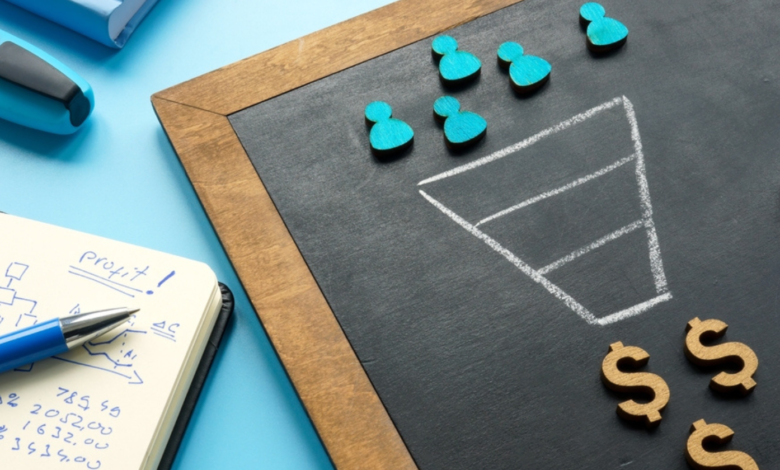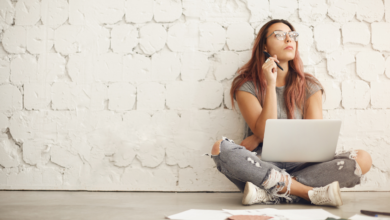What Is The Content Marketing Funnel?

You’ve identified your target leads, aligned your content creation, and leveraged different types of content to promote your product or service. Your content strategy sounds solid enough then, right?
The truth is that your content marketing efforts can and should always evolve.
Just as marketing strategy best practices change and adapt to current consumer behavior trends, so should content marketing.
Your sales team will likely already map out a sales funnel to better understand what your target audience thinks and does at each stage of the buying journey.
You can also create a content marketing funnel to guide your ideal customers from the awareness stage to the conversion stage where they become actual customers.
In this post, we’ll explore what exactly a content marketing funnel is, how to create a successful content marketing funnel that converts, and what types of content pieces to include at each stage of the funnel.
What is the content marketing funnel?
The content marketing funnel allows content marketers to visualize how they can leverage existing content to attract potential customers and guide them through their journey to their end goal.
This end goal may include a sale, demo, download, or other type of conversion.
Each stage of the funnel provides a purpose, such as gaining attention, generating quality leads, and closing conversions.
A marketing funnel can give brands greater insight into where they may have content gaps along the customer journey.
For example, if a brand has a great deal of content aimed at buyers in the awareness stage but not enough content in the decision stage, they may want to shift their efforts to creating more downstream content.
How to start mapping your content path
You’ll first need to evaluate your existing content inventory, including each type of content you produce, whether that’s blog content, long-form content (such as e-books or white papers), and more.
As you review each piece of content, you will then need to decide which stage of the buyer’s journey the content aligns with. These stages will include:
- Top of the Funnel (TOFU)awareness stage. At this point, potential customers are looking for information.
- mid funnel (MOFU)The stage of attention and reflection. In these stages, potential customers look at your products or services and read customer reviews. They can also provide this information to key stakeholders.
- Bottom of funnel (BOFU): Intent, evaluation and conversion stage. Buyers are ready to move forward with their purchase decision.
As you can see by examining each stage separately, your target audience needs diverse pieces of content depending on where they are located.
Funnel content cannot adopt a one-size-fits-all approach, or you will not effectively reach potential buyers. Relevant content should be provided at each stage of the conversion.
Let’s explore the most effective types of content for each stage of the funnel.
highest funnel content
The top of the funnel is where customers collect information to help guide them through the buyer’s journey.
At this point, the customer is likely to be aware of your business and what you have to offer.
Here, you want to build a positive customer experience to show the buyer that you deserve more engagement with them.
You’ll want to answer their questions, educate them about their queries, and convert those prospects into leads.
study conducted by smrash I found that the following types of TOFU content work best when driving traffic.
- How-to guide (72%).
- Landing page (35%).
- Infographic (28%).
- checklist (27%).
- E-book/white paper (26%).
- educational video (23%).
As you can see, most of these types of content are educational materials designed to provide more information at the awareness stage.
The primary goal of your content at this point is to provide assistance, and it should not be sales-oriented.
Middle funnel content
Once your ideal customers reach the middle of the funnel, they will no longer be looking for surface-level introductory content.
Instead, you’ll want to look to creating content that nurtures leads down the funnel. They might be looking for customer stories, product reviews, or a how-to video.
Consider the results of the same thing smrash In the study, the following types of MOFU content work best when driving traffic.
- guidebook (44%).
- Product overview (40%).
- Case study (34%).
- Landing page (31%).
- webinar (31%).
- success story (30%)
Keep in mind that these potential customers have already been introduced to your brand during the discovery stage, and therefore they should not be introduced with discovery stage content. An effective content strategy entails tailoring content to your audience.
Indeed, research shows 71% of consumers expect companies to provide personal interactions – and 76% are frustrated when this does not happen.
If you don’t tailor the content plan and content marketing formats to customers at every stage, you risk creating a poor customer experience with your business.
Bottom funnel content
Once a potential customer reaches the bottom of the funnel, they are looking for content that will help them finalize a purchase decision.
They are looking to find out how your product or service will make the return on investment worthwhile and why you are a better choice than your competitors.
As these customers move beyond the awareness stage and look to potentially convert, the type of content you provide them is critical to building trust and ultimately completing the purchase.
The content you provide during the consideration phase can make the difference between a conversion and a lost sale. The types of content that perform best in the BOFU stage include:
- Product overview.
- Customer opinion.
- success story.
Consider sharing success stories of existing customers that are similar to your prospects at this point in the funnel.
Another example of content to include at this stage would be email campaigns featuring positive customer testimonials and product warranties. Include specials, free trials, or live demos, too.
What do you do once your content has been evaluated?
Once you have a comprehensive view of the content already in place for each stage of the journey, it’s time to identify where there are gaps.
You will also need to decide what types of content assets you need to create. For example, you may have determined that you don’t have any instructive content for buyers in the awareness stage. Or maybe you don’t have enough customer success stories.
After you’ve identified the content gaps, it’s time to put together an editorial calendar to prioritize what you need to address first and when.
The editorial calendar should be monitored daily to keep track of what you have in the queue, what’s coming up, the intended content audience for the article, and where the piece falls in the content marketing funnel.
It can also be helpful to conduct a competitive analysis of your competitor’s content marketing strategy to identify opportunities for additional new content pieces and how you can improve your content.
You want both relevant and useful content to meet Google’s useful content system standards and create the perfect user experience.
conclusion
Having a comprehensive and coherent content strategy is crucial to creating a rewarding buying experience. Keep your audience in mind with every piece of content you create.
You’ll also want to have a thorough understanding of your target customers, how they think, what they’re looking for, and how you can solve their problem.
The path of effective content marketing takes time, testing, and patience to master, but it is absolutely essential for you to outpace your competitors and come out on top.
More resources:
- The 7 best content marketing platforms for an effective strategy
- Here’s your complete B2B multichannel strategy in 5 simple steps
- Content Marketing KPIs: Your Guide to Choosing the Right Content KPIs
Featured image: Vitalii Vodolazskyi / Shutterstock




